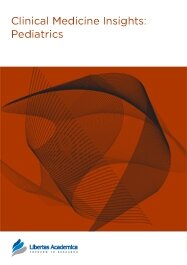

Publication Date: 22 Jan 2009
Journal: Clinical Medicine Insights: Pediatrics
Citation: Clinical Medicine: Pediatrics 2009:3 1-10

Xue Ming1, Ye-Ming Sun2, Roberto V. Nachajon3,4, Michael Brimacombe5 and Arthur S. Walters6
1Department of Neuroscience, UMDNJ-New Jersey Medical School, Newark, NJ. 2Creedmoor Psychiatric Center, Queens Village, NY and Department of Psychiatry, Columbia University Medical Center, New York, NY. 3Pediatric Sleep Disorders Center, St. Joseph Children’s Hospital, Paterson, NJ. 4Sleep/Wake Center, Palisades General Medical Center, North Bergen, NJ. 5Department of Preventive Medicine, UMDNJ-New Jersey Medical School, Newark, NJ. 6Center for Sleep Disorders Treatment, Research and Education, New Jersey Neuroscience Institute at JFK Medical Center, Seton Hall University, School of Graduate Medical Education, Edison, NJ.
Abstract
The prevalence of sleep related complaints is reported by questionnaire studies to be as high as 83.3% in children with autism spectrum disorders (ASD). Questionnaire studies report the presence of various parasomnia in ASD. However, no polysomnographic study reports non-REM parasomnias and only a single study reports REM related parasomnias in ASD. We investigated the prevalence and characteristics of sleep disorders by polysomnographic study and questionnaires in a cohort of 23 children with ASD and 23 age-matched children of a non-autistic comparison group. The results showed significantly more non-REM parasomnias in 14 children with ASD on polysomnograms (PSG) and 16 ASD children by questionnaire, a finding that was not associated with medication use, other comorbid medical or psychiatric disorders, or sleep disordered breathing. Of the 14 children with ASD who had PSG evidence of parasomnia, 11 of them had a history suggestive of parasomnia by questionnaire. There was a high sensitivity but a low specificity of parasomnia in ASD by questionnaire in predicting the presence of parasomnia in the PSG. Of the parasomnias recorded in the laboratory, 13 ASD children had Disorders of Partial Arousal, consistent with sleep terrors or confusional arousals. Furthermore, multiple episodes of partial arousal occurred in 11 of the 13 ASD children who had PSG evidence of Disorders of Partial Arousal. Of the 11 ASD children with multiple episodes of partial arousal, 6 ASD children had multiple partial arousals during both nights’ PSG study. Sleep architecture was abnormal in children with ASD, characterized by increased spontaneous arousals, prolonged REM latency and reduced REM percentage. These results suggest a high prevalence of parasomnia in this cohort of children with ASD and a careful history intake of symptoms compatible with parasomnia could be prudent to diagnose parasomnia in ASD children when performing a PSG is not possible.
PDF (244.06 KB PDF FORMAT)
RIS citation (ENDNOTE, REFERENCE MANAGER, PROCITE, REFWORKS)
BibTex citation (BIBDESK, LATEX)
XML
PMC HTML

The publishing experience in Libertas Academica journals is unique. Readers can feel satisfied that publications are peer reviewed. Authors follow simple steps to reach final stage of publication. All readers have access to articles. Journal subscriptions or medical library access is not needed.
Facebook Google+ Twitter
Pinterest Tumblr YouTube